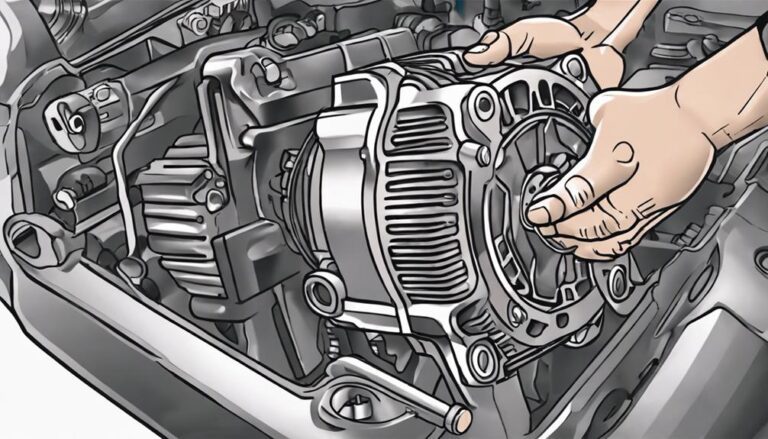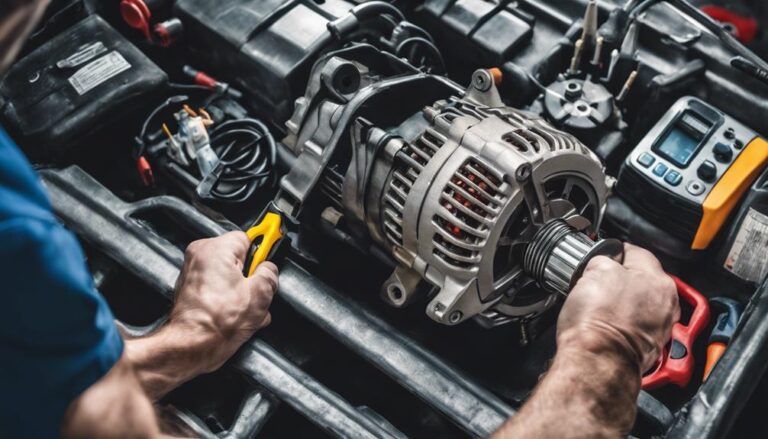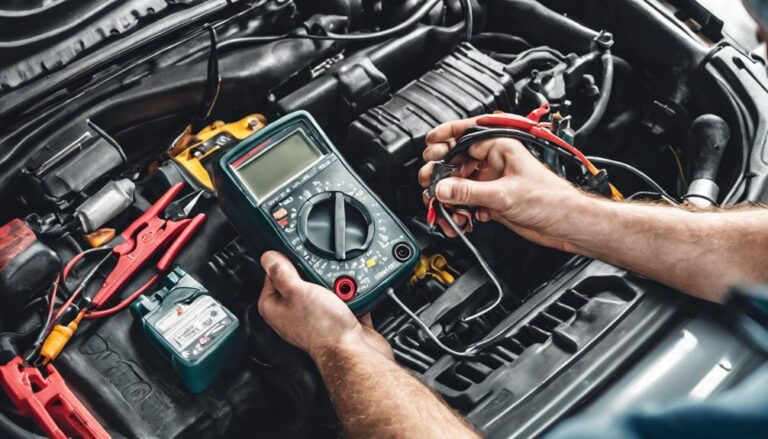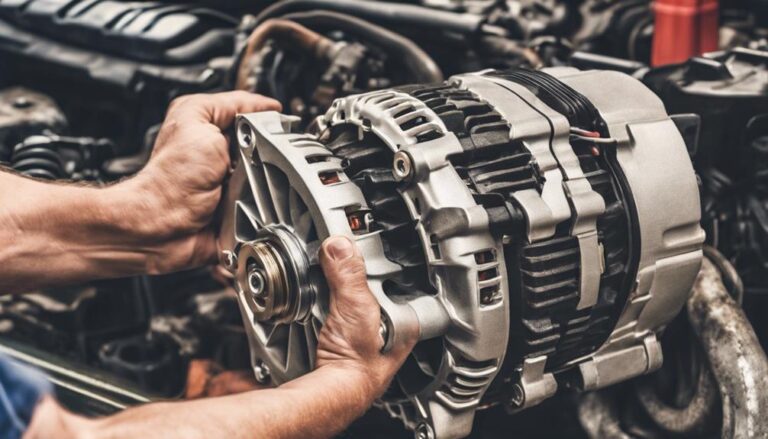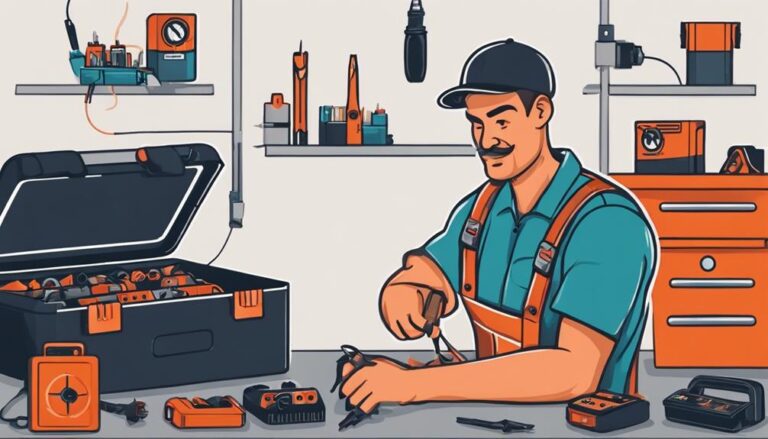Diagnosing Alternator and Starter Problems: A How-To Guide
If you've ever wondered why the alternator is among the top three components replaced on vehicles over 5 years old, understanding how to diagnose alternator and starter problems is important for maintaining your vehicle's reliability.
By recognizing the early warning signs and following systematic troubleshooting methods, you can potentially save time and money on unnecessary repairs.
Stay tuned to uncover practical tips for pinpointing issues with these essential components and ensuring your vehicle stays running smoothly.
Key Takeaways
- Understand alternator and starter functions for effective diagnosis.
- Recognize signs like dimming lights and unusual noises.
- Conduct jump-start test to pinpoint battery, starter, or alternator issues.
- Seek professional expertise for accurate diagnosis and timely repairs.
Understanding Alternator Functionality
To comprehend the intricacies of alternator functionality, grasp its pivotal role in converting mechanical energy into essential electrical power for your vehicle. The alternator is an important component that plays a key role in converting mechanical energy into necessary electrical power for your vehicle. This component is crucial for maintaining a continuous power supply to the electrical system by recharging the battery while the engine is running. This process is essential for operating various electrical components in your vehicle, such as lights, radio, and air conditioning.
Understanding how the alternator works is essential for maintaining the overall health of your vehicle. When the alternator fails, it can lead to issues like dimming lights or a dead battery, affecting the performance of the electrical system. Typically, alternators have a lifespan of 8 to 12 years before they may start showing signs of failing.
If you notice any signs of alternator problems, it's advisable to consult a mechanic for a proper diagnosis and timely repairs. Ignoring potential alternator issues can result in further damage to your vehicle's electrical components, ultimately impacting its overall performance.
Identifying Signs of Alternator Issues
Understanding the signs of alternator issues is important for maintaining the electrical health of your vehicle and ensuring peak performance. One clear indicator of alternator problems is dimming lights when using electrical accessories in your car.
If you notice dashboard warning lights, such as the battery or charging light, it may signal issues with the alternator. Unusual noises like grinding, whining, or squealing coming from the engine area could also point to alternator trouble.
Constantly experiencing a dead battery even after jump-starting might be a sign of alternator failure. Additionally, if you encounter electrical failures in various systems like power windows or the radio, these issues could be linked to a faulty alternator.
To check for alternator issues, start your car and pay attention to these signs of a failing alternator. Taking action promptly can prevent further damage to your vehicle's electrical system and keep your car running smoothly.
Assessing Starter Performance

Evaluating the performance of your starter involves listening for specific sounds and checking electrical components for proper functionality. When you attempt to start your engine, pay attention to clicking, grinding, or whirring sounds, as these could indicate a bad starter. Additionally, if the engine fails to start but the dashboard lights and other electrical components are working, it may point to starter issues. Inspect the starter solenoid to make sure it is engaging properly with the flywheel. Testing the starter motor's voltage and amperage can help determine if it is receiving the necessary power to function correctly. If you notice any of these signs of starter failure, considering seeking professional assistance for accurate diagnosis and repair.
| Starter Performance Check | Description |
|---|---|
| Clicking Sounds | Indicate potential starter issues |
| Grinding Sounds | Suggest a faulty starter motor |
| Whirring Sounds | Could point to starter solenoid problems |
| Electrical Components | Check if they work without the engine starting |
Conducting Jump-Start Test
Begin by connecting the jumper cables to conduct the jump-start test, a crucial diagnostic step in identifying potential issues with the starter, alternator, or battery. The jump-start test helps in diagnosing problems quickly.
Here are the key indications to look out for during the test:
- If the car doesn't start after jump-starting, it indicates a starter issue.
- If the car dies after removing the cables, it suggests an alternator problem.
- If the car continues running after cables are removed, it indicates a battery issue.
Next Steps After Diagnosis
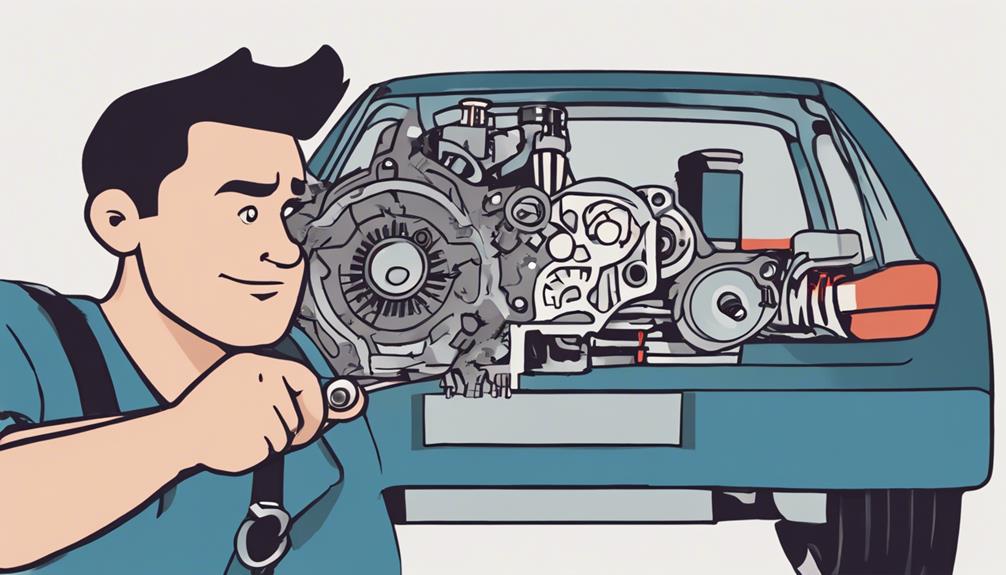
Upon completing the diagnosis of alternator or starter problems, the next essential step is to consult a professional technician for accurate repairs and further guidance. It is imperative to make sure that the faulty component is correctly identified to prevent any related issues in the future. Consider opting for a complete vehicle inspection to address any other potential problems that could be impacting the performance of your starter or alternator. The technician will provide recommendations for replacement parts or repairs based on the thorough diagnosis conducted. Timely resolution of alternator or starter issues is vital to guarantee the smooth operation of your vehicle. Trusting the expertise of a professional will lead to accurate repairs and a lasting solution for your vehicle's needs.
| Next Steps After Diagnosis | |
|---|---|
| Confirm Faulty Component | Make Sure Accurate Repairs |
| Complete Vehicle Inspection | Receive Recommendations |
| Timely Resolution | Prevent Related Problems |
Frequently Asked Questions
How Do I Know if My Alternator or Starter Is Bad?
If your alternator or starter is bad, watch for dimming lights, clicking sounds, and engine issues. Test with diagnostic tools, troubleshoot for common signs, and consult a mechanic for repair options. Maintain electrical components for peak performance.
What's the Easiest Way to Tell if Your Alternator Is Bad?
To easily tell if your alternator is bad, watch for warning lights, dim battery voltage, electrical issues, strange noises, burning smells, check visually, use a multimeter, DIY tests, inspect alternator belt, and seek professional diagnosis.
What Are Symptoms of a Bad Starter?
Feeling frustrated by starter problems? Listen for starter clicking, engine not cranking, ignition issues, or strange noises. A bad starter may cause battery drain, electrical failure, slow start, or dashboard lights flickering. Time for a check-up?
How Do You Check if a Starter Is Good or Bad?
To check if a starter is good or bad, perform a voltage test, noise check, and visual inspection. Guarantee proper electrical connections, test the solenoid function, battery condition, ignition switch, starter relay, and observe engine cranking. For accurate assessment, seek professional diagnosis.
Conclusion
Congratulations! You have now mastered the art of diagnosing alternator and starter problems like a pro.
With your newfound knowledge and skills, you can tackle any electrical issue that comes your way.
Remember, when in doubt, always seek expert assistance to guarantee your vehicle keeps running smoothly.
Keep up the good work and happy troubleshooting!


